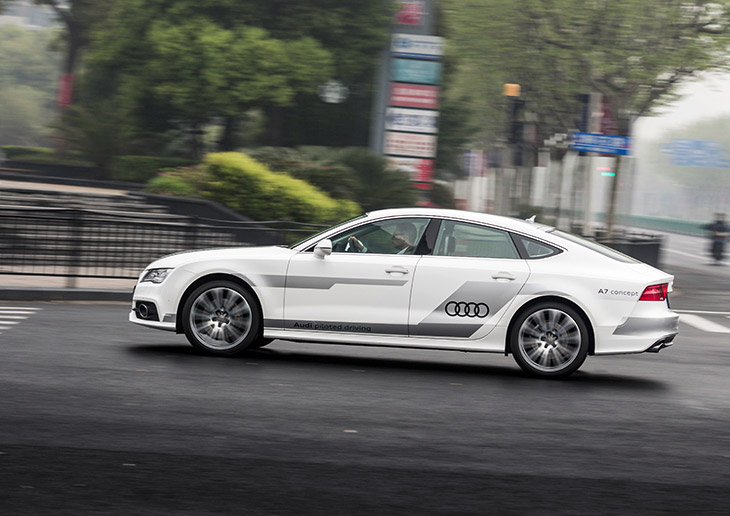 Audi wants to make city traffic safer and flow more smoothly. That is the motive behind the brand’s involvement in the UR:BAN cooperative project. 31 partners are jointly developing driver assistance and traffic management solutions for urban traffic over the project’s four-year term. The concluding presentation will take place on October 7 in Düsseldorf.
Audi wants to make city traffic safer and flow more smoothly. That is the motive behind the brand’s involvement in the UR:BAN cooperative project. 31 partners are jointly developing driver assistance and traffic management solutions for urban traffic over the project’s four-year term. The concluding presentation will take place on October 7 in Düsseldorf.
“The further development of driver assistance systems harbors considerable safety potential, specifically in urban traffic,” commented Dr. Horst Glaser, Head of Development for Chassis and Driver Assistance Systems, ahead of the concluding event. “Audi’s role in the project concentrates mainly on systems that assist the driver with braking and steering in critical situations in urban traffic. To that end, we require among other things reliable scanning of the vehicle environment,” explained Dr. Glaser.
The abbreviation UR:BAN is the German acronym for “Urban Space: User-oriented assistance systems and network management.” The Germany-wide cooperative project has been running since April 2012 and ends in March 2016. It brings together 31 partners from the automotive and supply industry, electronics manufacturers, communication technology and software companies, universities, research institutes and cities. Their common objective is to develop driver assistance and traffic management systems specifically for cities. The Federal Ministry of Economics and Energy (BMWi) is providing some EUR 40 million in funding for the project.
The project activities center on people as drivers, cyclists, pedestrians or traffic planners, along with three major subject areas: Networked Traffic System, Cognitive Assistance and Human Factors in Traffic.
The aims of the Cognitive Assistance area, for example, include comprehensively scanning the vehicle environment in a 360° all-round view. The better drivers and cars perceive their environment, the more easily they can avoid collisions for instance by swerving and braking. A robustly designed system that reliably avoids false activation is a particularly important aspect here. Audi has been running tests using three cars. One of them, an Audi A7 Sportback, can be witnessed in action as a technology demonstrator in a variety of traffic scenarios at this Wednesday’s concluding presentation. The experimental vehicle is equipped with close-to-production sensors: As well as a laser scanner and a video camera at the front, it has a dual radar system at the front, a rear and a side radar system. This technology demonstrator also features control components that helped the three Audi RS7 piloted driving concept vehicles to set up driverless records in 2014 and 2015 on the Hockenheim, Oschersleben, Ascari and Sonoma racetracks.
Collision avoidance assist in Audi models such as the new Audi A4 and the Q7 is already helping to reduce the risk of an accident. Findings from the UR:BAN project are being applied in Audi’s development work in areas such as the refinement of existing assistance systems.
Furthermore, in the cooperative project AUDI AG is also heading up the “Effectiveness, Assessment and Legal Issues” sub-project which above all addresses the legal framework for the driver assistance systems developed in UR:BAN. This includes for instance clarifying various issues concerning the eligibility of automatic emergency steering systems for approval. In the “Human Factors in Traffic” subject area, Audi wants to investigate and highlight the wide-ranging interactions between car and environment in an adapted human-machine interface. Here, it aims to register and systematize diverse urban junction situations in order to define an appropriate information and warning strategy.
20 employees from the areas of automated driving functions pre-development, accident research and MMI vehicle concepts ergonomics development are involved in the UR:BAN project.
Audi is a pioneer of “piloted driving.” The company has staged numerous spectacular driving demonstrations since 2009 as part of its development work – on public roads, international racetracks and a salt flat. The technologies for piloted driving deliver improved safety and efficiency, save time and bring added convenience. Audi plans to go into production with its first piloted system in the next model generation of the Audi A8. This is capable of taking charge of driving in stop-and-go traffic at up to 60 km/h (37.3 mph).
Source: Audi